

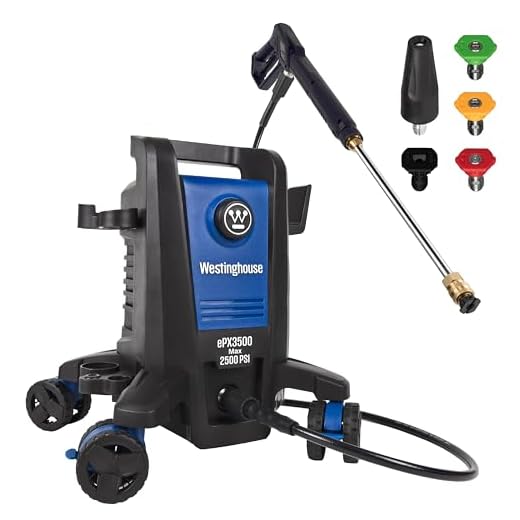

For optimal results when cleaning your vehicle, I strongly recommend using a 25-degree nozzle, commonly shown in green. This attachment strikes the perfect balance between pressure and coverage, ensuring a thorough wash without risking damage to the paintwork.
Utilising this specific attachment allows for a wider spray pattern while maintaining sufficient force to remove dirt and grime effectively. It’s particularly advantageous for delicate areas, such as around emblems and crevices, where higher pressure could cause scratches or chips in the finish.
Before starting, ensure the nozzle is correctly attached, and always keep a safe distance of at least 2 feet from your vehicle’s surface. This technique will help prevent any unintended harm while maximizing cleaning efficiency.
Recommended Nozzle for Vehicle Cleaning
For optimal results, I suggest using a 25-degree nozzle or a medium fan spray attachment. This type delivers a balance of pressure and coverage, effectively removing dirt and grime without risking damage to the paintwork.
Angle and Distance Considerations
Maintain a distance of about 2 to 3 feet from the vehicle’s surface while spraying. Adjust the angle of the nozzle to ensure the cleanest approach, typically aiming directly at the contaminants while keeping the spray moving to avoid concentrated pressure on any one spot.
Additives and Pre-Treatment
For stubborn stains or areas requiring extra attention, consider applying a dedicated automotive detergent before rinsing. This combination enhances the cleaning power without compromising the vehicle’s finish.
Understanding Nozzles and Their Colours
The decision to clean your vehicle effectively lies in the selection of the correct nozzle. Each colour corresponds to a specific spray angle and intensity, which impacts cleaning efficiency and safety.
Colour Codes Explained
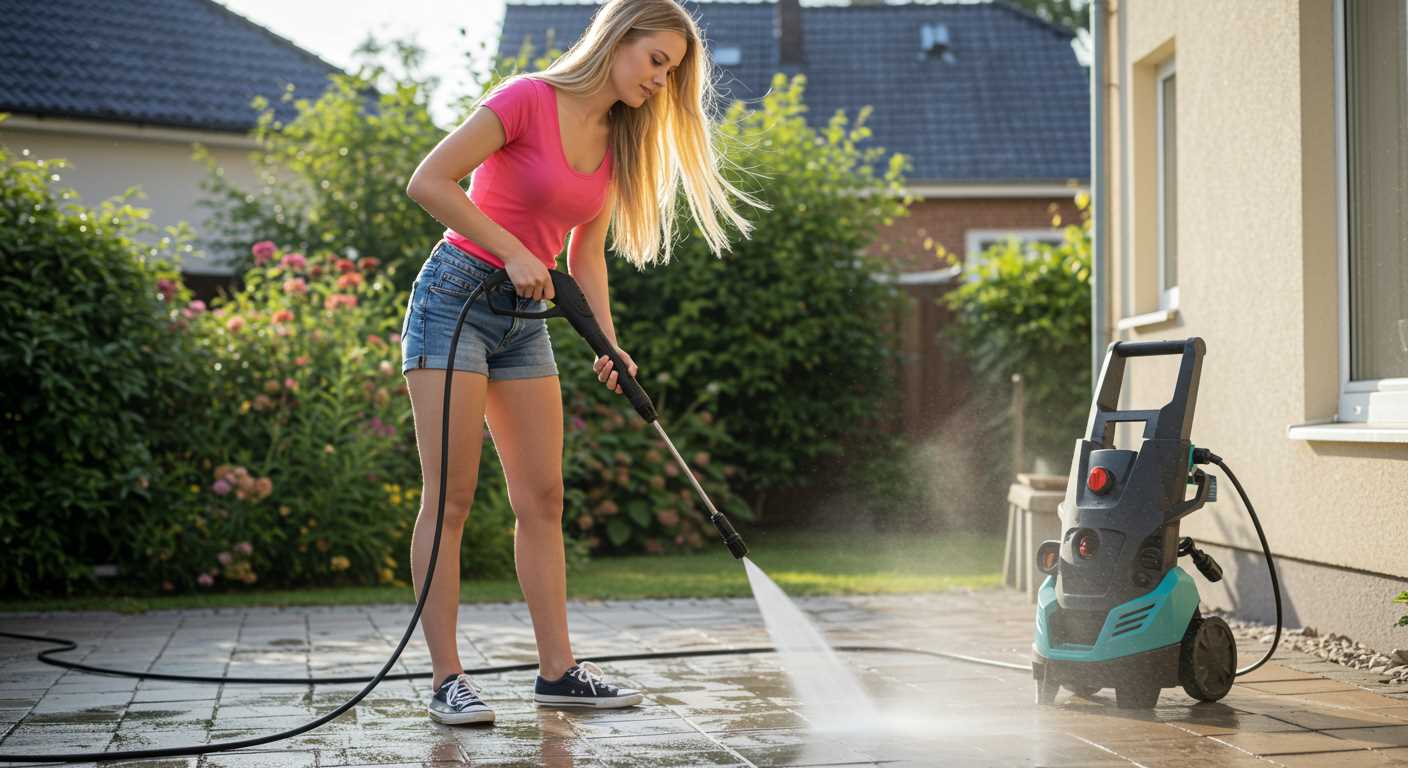
Typically, nozzles are colour-coded to indicate their spray angles: red (0 degrees), yellow (15 degrees), green (25 degrees), white (40 degrees), and black (soap). The red nozzle provides the most focused stream, ideal for tough grime but risky for delicate surfaces. The yellow variant, with a 15-degree spread, is effective for removing stubborn stains but requires caution on painted surfaces.
Choosing the Right Nozzle
For preliminary washing, the white nozzle (40 degrees) is the safest option, dispersing water gently. Follow this with the black nozzle when applying soap, as it produces a wider spray for thorough coverage. Always test a small inconspicuous area first to ensure compatibility with your vehicle’s surfaces. Understanding these colour codes ensures proper treatment and protection during your cleaning process.
Recommended Pressure Settings for Car Cleaning
For a thorough wash without damage, a setting of 1200 to 1900 PSI is optimal. This range effectively removes dirt and grime while being gentle enough to protect paint and finishes.
Guidelines for Specific Areas
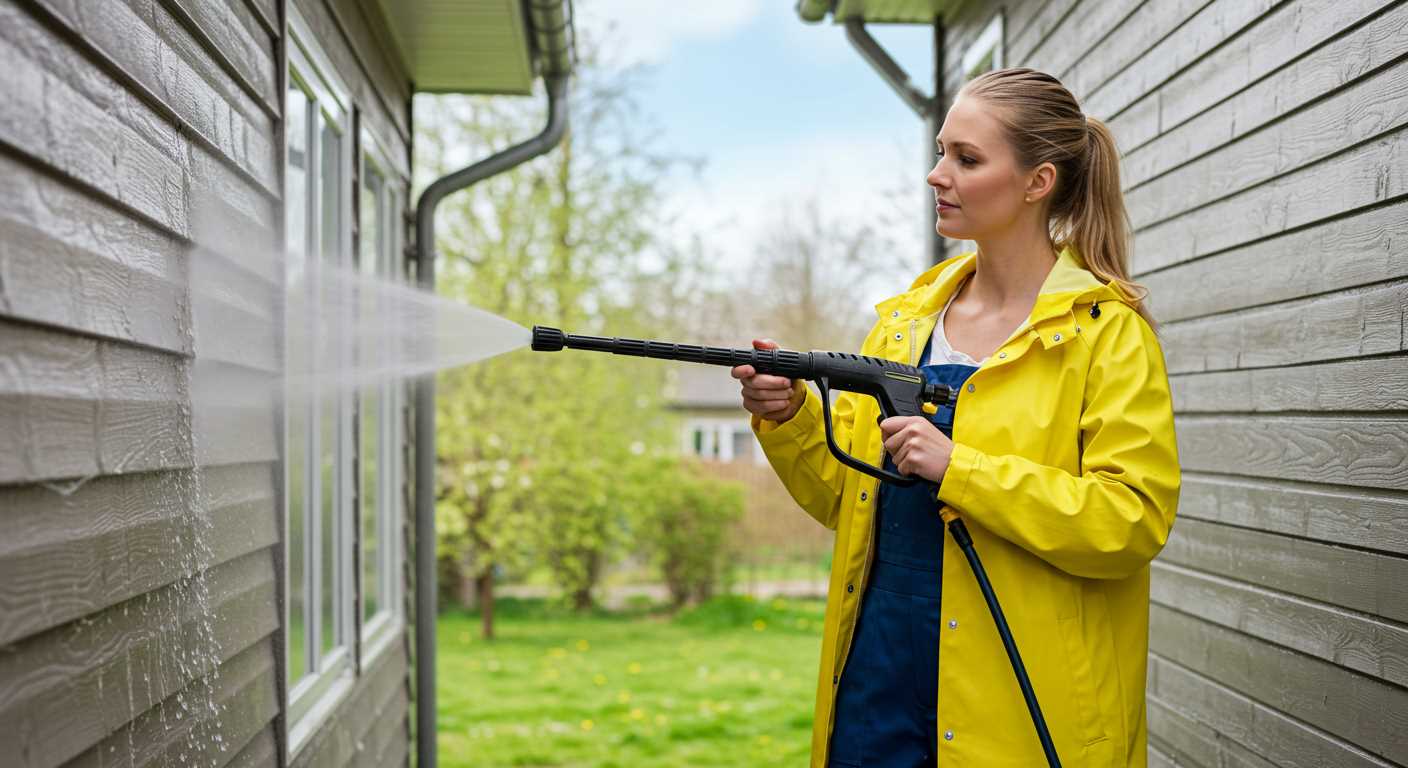
Start with 1200 PSI for sensitive sections, like the paint and windows. Increase to 1500 PSI for tough spots, such as wheel wells and undercarriages, where dirt tends to accumulate. For stubborn stains, you can cautiously reach up to 1900 PSI, ensuring to maintain a safe distance to prevent any surface harm.
Final Tips
Always maintain a distance of about 2 feet from the surface to prevent damage. Adjust the settings based on the dirt level and the area being cleaned. It’s advisable to test on a small, inconspicuous section first. This method ensures a clean vehicle without the risk of stripping the finish or etching the glass.
How to Select the Right Tip for Different Car Surfaces
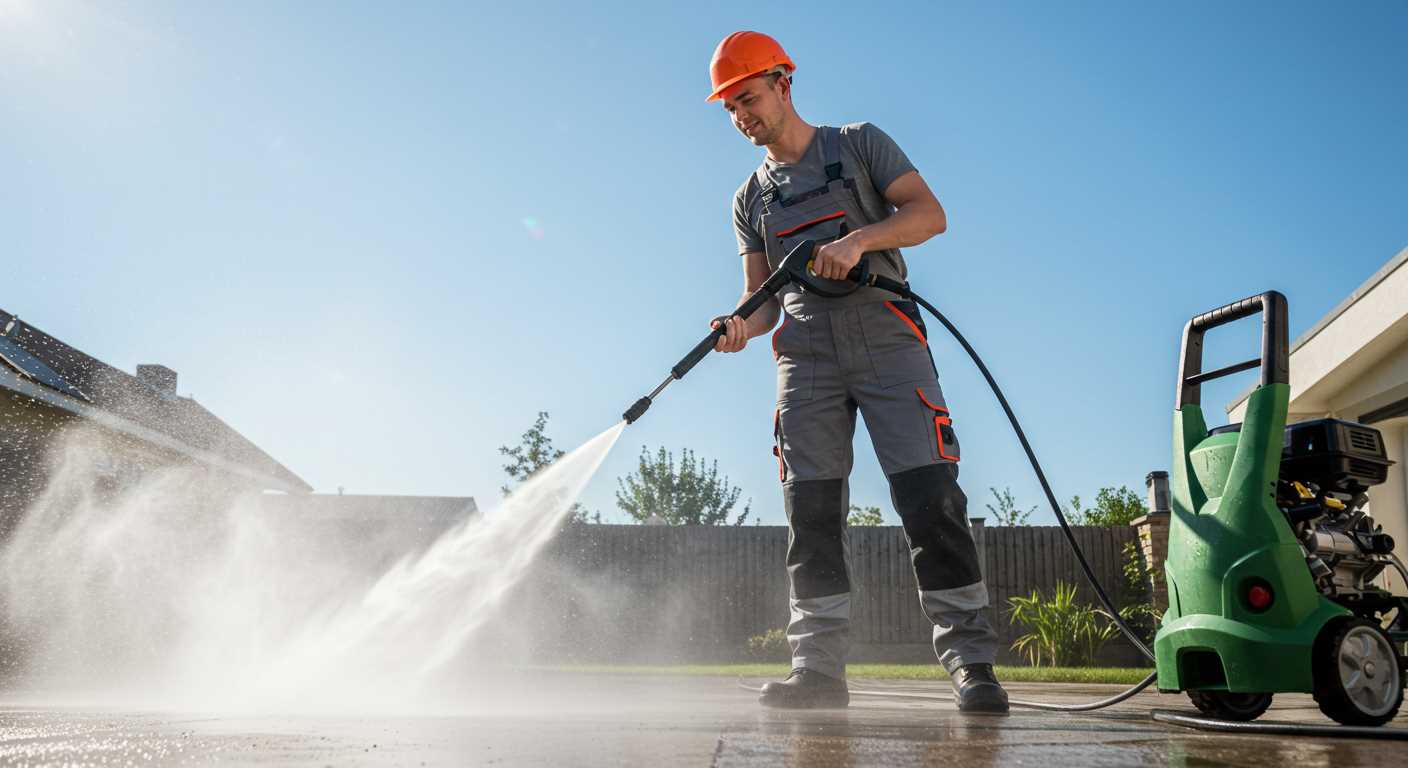
Choose a 25-degree nozzle for painted surfaces. This angle delivers a balanced spray that cleans effectively without risking damage to the paint. It’s suitable for general washing and removing grime.
For glass surfaces, such as windows and mirrors, opt for a 40-degree nozzle. The gentler spray helps avoid potential chips or cracks while ensuring a thorough clean. It’s perfect for clearing away residues without harsh impacts.
When dealing with tough spots like wheels and wheel wells, a 15-degree nozzle is preferable. This nozzle produces a concentrated stream ideal for tackling brake dust and road grime. However, maintain a distance to prevent damage to the finish.
Consider using an adjustable nozzle for versatility. This allows you to switch between different spray angles, catering to the specific needs of various surfaces around your vehicle.
Assess the surface condition. If the exterior has wax or polymer sealants, a gentler approach is necessary. In this case, stick to wider angles to maintain the protective layer while ensuring cleanliness.
Before applying any spray, test patches in inconspicuous areas. This will confirm the suitability of the chosen nozzle without risking visible areas. Understanding surface materials and their tolerances is key to preserving your vehicle’s appearance.
By being selective about the nozzle angle and type, I ensure a safe and effective cleaning process, keeping my vehicles in prime condition.
Using the 25-Degree Tip for General Cleaning of Vehicles
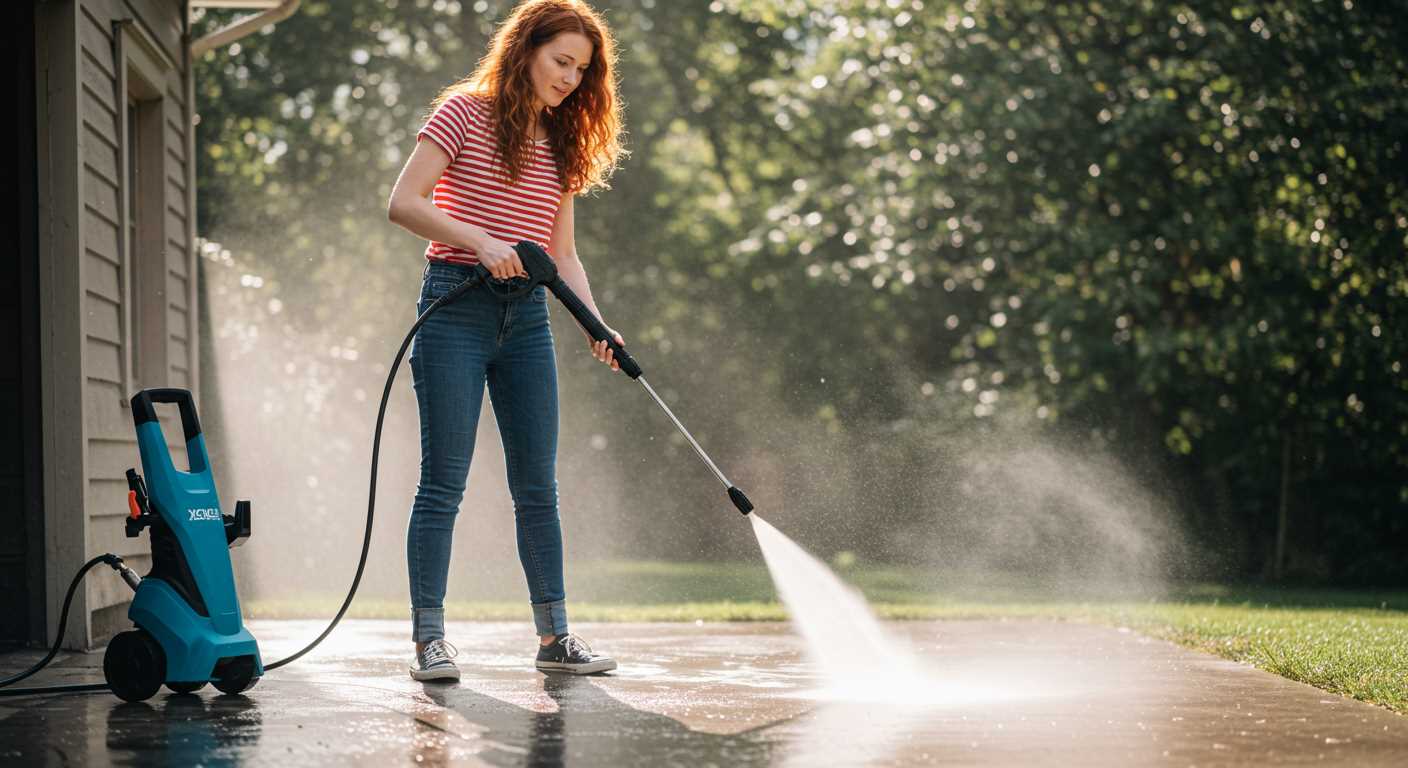
The 25-degree nozzle is an excellent choice for general cleaning of vehicles. It strikes a balance between power and gentleness, making it suitable for safely removing dirt and grime without risking damage to delicate surfaces.
When employing this attachment, maintain a distance of about 12-18 inches from the vehicle. This distance helps prevent any potential paint damage while ensuring effective cleaning. Angle the spray slightly to avoid direct impact on any one spot for too long, which could lead to paint deterioration.
For the best results, I recommend starting from the bottom of the vehicle and moving upwards. This technique allows dirt to flow downwards and prevents it from re-soiling cleaned areas. It’s crucial to maintain a steady motion to achieve an even clean across the surface.
Utilising this nozzle during the rinsing phase is also beneficial. After applying soap, switching to the 25-degree attachment helps rinse off any remaining suds without the risk of streaking, leaving a clean and polished finish.
| Feature | Description |
|---|---|
| Angle | 25 Degrees |
| Recommended Distance | 12-18 inches |
| Approach | Bottom to top motion |
| Application | General washing and rinsing |
This nozzle is also effective for typical contaminants such as road salt, bird droppings, and tree sap. Ensure to pre-soak tough spots with a suitable detergent to enhance cleaning power. Incorporating the 25-degree attachment into your cleaning routine will yield commendable results without compromising the vehicle’s finish.
The Role of the Soap Tip in Pre-Washing Your Vehicle
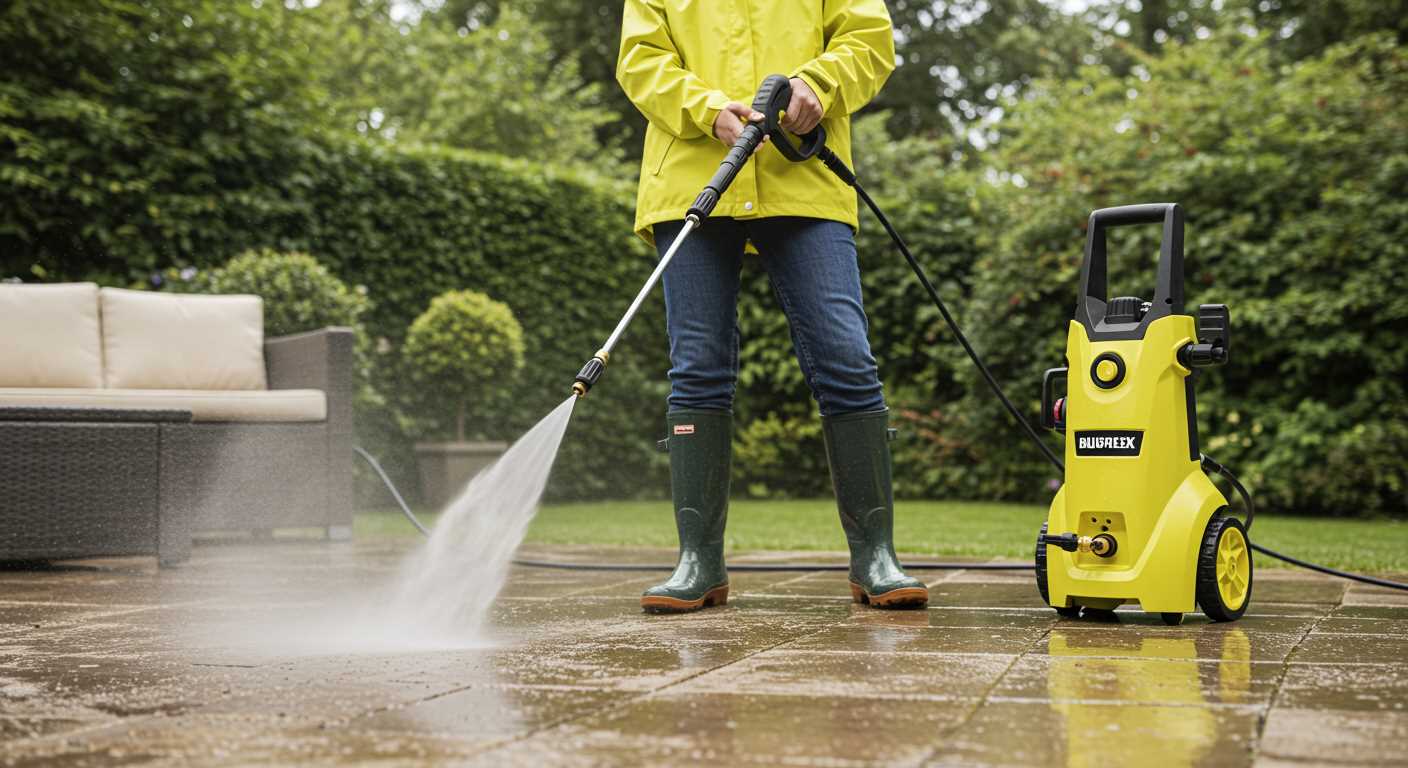
For effective pre-cleaning, I always recommend using a soap nozzle when tackling vehicle exteriors. This attachment is specifically designed to dispense cleaning foam, which clings to surfaces, breaking down dirt and grime before rinsing. Optimal foam penetration leads to better results compared to using water alone.
Key pointers for utilising the soap nozzle include:
- Always mix the detergent with water in the correct ratio as specified by the manufacturer to achieve maximum foaming action.
- Apply the foam generously, ensuring even coverage over all areas, particularly on highly soiled sections.
- Allow the soap to dwell for a short time, approximately 5 minutes, to give it time to lift embedded particles.
- Use this attachment from a distance of around 2-3 feet to prevent any damage to the paintwork from concentrated suds.
Choosing a quality detergent is critical; select one that is pH-balanced and compatible with your vehicle’s finish. Avoid harsh chemicals that could damage surfaces or strip wax coatings.
After applying foam, follow up with a thorough rinse using a standard rinsing nozzle. This ensures that all soap residues and lifted dirt are completely removed. Adopting this method significantly improves the cleaning process, leading to a shine that reflects your vehicle’s true potential.
When to Avoid Using High-Pressure Nozzles on Vehicles
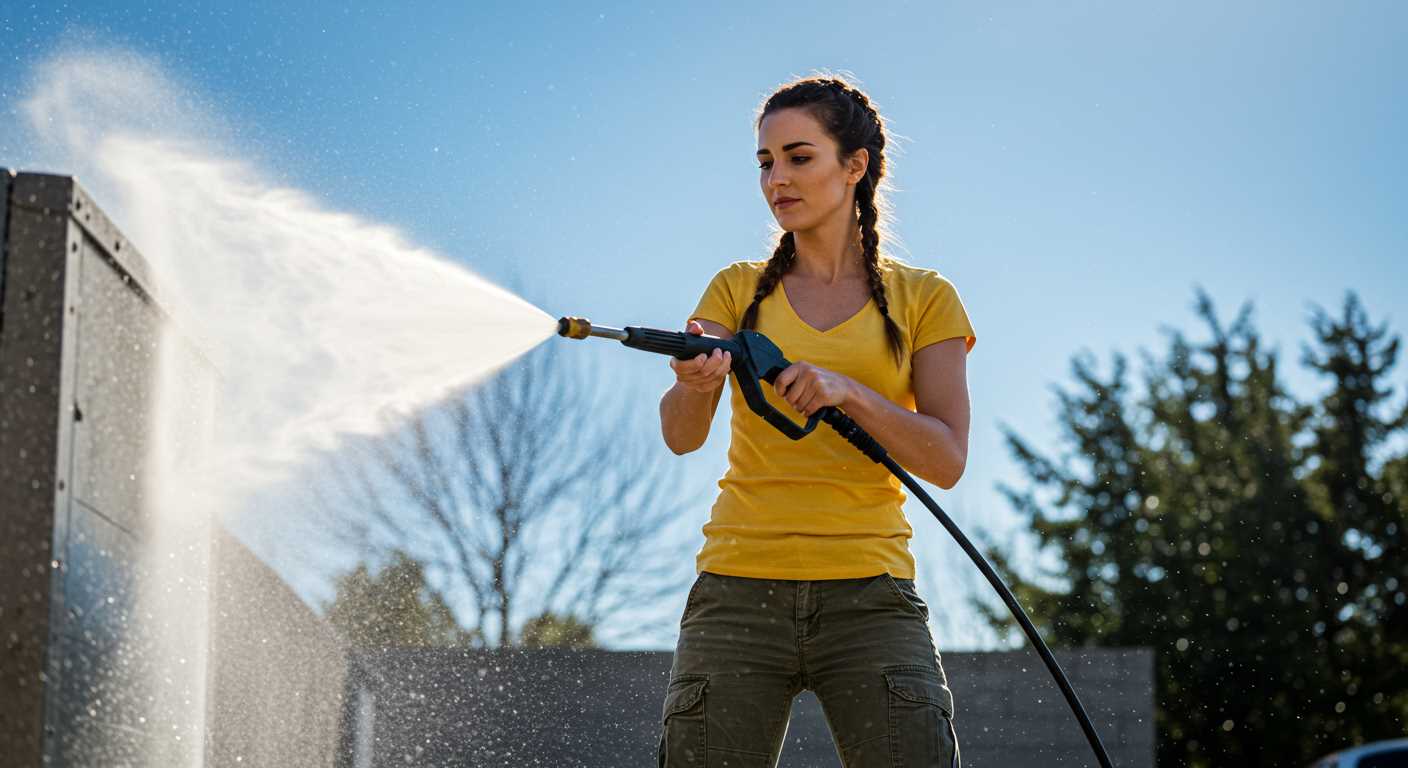
Avoid high-pressure nozzles on delicate surfaces such as painted areas, windows, and plastic trim. The force can lead to chipping paint or cracking plastic, which is costly to repair.
Examples of Sensitive Areas
- Clear coat finishes
- Window seals and mouldings
- Soft convertible tops
- Any aftermarket decals or wraps
Opt for a wider spray pattern, like a 25-degree or 40-degree nozzle, especially around intricate designs or areas where water infiltration might cause damage.
Situations to Consider
- Cleaning near open windows or doors
- Working on freshly painted surfaces
- Handling vintage or classic models
- Cleaning vehicles with rust or paint damage
Ensure to keep a safe distance from the surface to mitigate any risk of damage. Operating at an angle rather than straight on can further help in protecting vulnerable areas.
Maintaining Your Nozzles for Optimal Performance
Clean the nozzles regularly. Build-up of grime can lead to uneven spray patterns and reduced efficiency. A simple rinse with warm water helps ensure they’re free of debris.
Inspect for clogs or scratches before each session. Clogs can result from dried soap or minerals in the water. Use a thin wire to carefully clear any obstruction without damaging the nozzle.
Store in a dry, cool place. Protect from extreme temperatures and moisture to prolong lifespan. A dedicated storage case can prevent accidental damage during transportation.
Pay attention to wear. Over time, nozzles can wear down, affecting performance. Replacing them as soon as you notice diminished effectiveness is vital to maintaining quality results.
Consider periodic testing. Running a short cycle with a new nozzle can confirm whether it operates optimally. Look for a consistent, defined spray pattern and even distribution.
Mix soap with care. Using the wrong concentration or type can corrode the nozzle. Always refer to manufacturer guidelines for compatible cleaning agents to avoid damage.
Utilise protective gear. During maintenance, wearing gloves and goggles prevents injuries from sharp edges or chemical exposure while handling nozzles.








